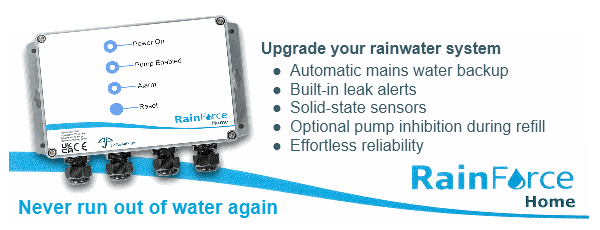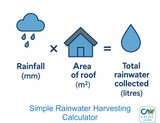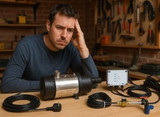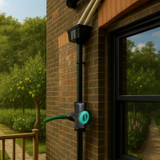Mains Water Backup in Rainwater Harvesting Systems – Should the Pump Run During Top-Up?
If you’ve got a home rainwater harvesting system with a mains water backup, getting the setup right is critical — especially when it comes to how your pump behaves during the top-up cycle.
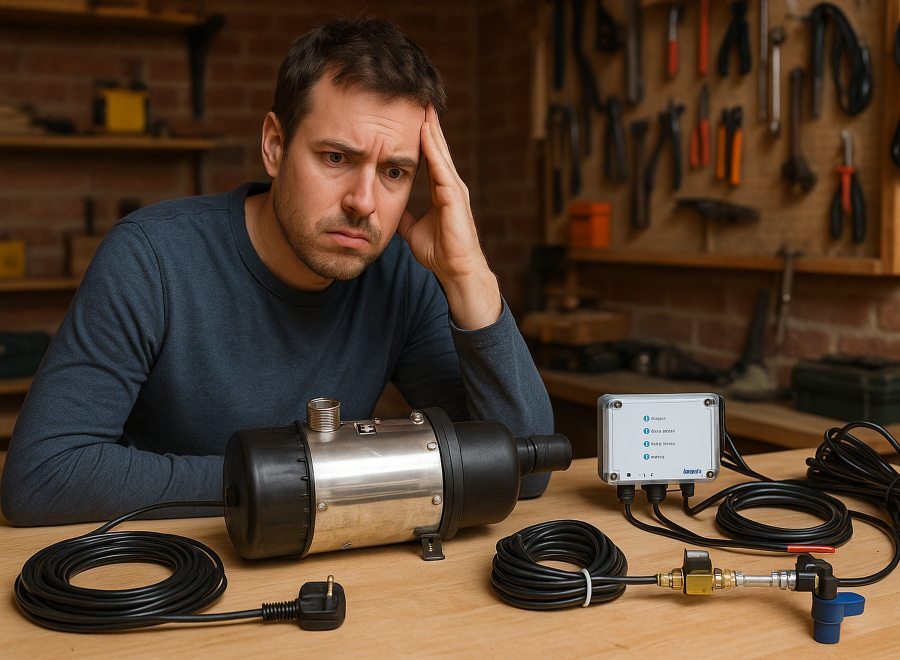
One important question we often get is: Should the rainwater pump keep running when solenoid is topping up the tank with mains water?
In most domestic installations, the answer is no — and here’s why:
Why You Should Pause the Pump During Top-Up
1. To Protect the Pump from Dry Running
When your rainwater tank is low, the back-up system triggers a top-up from mains water. But the flow rate from the mains – particularly when routed through a tundish (as required by UK regulation BS EN 13076 for a type AA air gap) – is deliberately restricted to prevent contamination.
The problem? That reduced flow can’t keep up with the pump. If the pump keeps running, it will draw water out faster than it’s coming in, potentially sucking air and/or sediment into the pump and the pipe network.
This leads to a bunch of problems:
- Pump damage from running dry
- Clogged toilet valves from stirred-up sediment going into the pipe network
- Annoying pipe noises and vibration from trapped air in the pipe network
- Damage to pump impeller caused by the cavitation effect (see below)
- The need to reprime the pump because of air in the pump, which is a real hassle
In short: letting the pump run while the tank is nearly empty is risky.
There are a couple of other reasons why inhibiting the pump during the top-up cycle is beneficial.
2. To Prevent False Tank Level Readings
When the tank is being topped up, the inflow can cause turbulence and waves (influenced by the tank size, water pressure and solenoid location).
These waves can trick the level sensor into thinking the tank is full (or still empty), leading to:
- Under or Overfilling
- Premature shutoff and multiple restarts.
If the pump is running at the same time, this turbulence continues for longer and you might even get cavitation if the inflow is directly above the pump intake. That pulls air into the system again (see point 1).
3. To Maximise Efficiency and Extend Pump Life
If connected appliances and cisterns fill together the pump can serve multiple appliances in a single run at higher flow, instead of stopping and starting repeatedly. The requirement for this is unlikely to occur very often, however when it does it leads to:
- Fewer restarts means less motor wear and less motor heating
- Higher efficiency
- Better overall lifespan of the pump
- Lower total cost of ownership (TCO)
When You Might Want the Pump to Keep Running
Of course, there are some situations where you don’t want to inhibit the pump. For example: If you have an appliance that uses the rainwater, like for example, your washing machine, and if the pump stops while it is mid-cycle it may not complete the wash. Which can be frustrating.
In that case, it may be necessary to let the pump run during top-up, but you’ll need a safety net: Use a float switch or similar dry-run protection to make sure the pump doesn't run if the water in the tank gets too low.
Just keep in mind:
- You’ll have to set the top-up activation level higher, so the pump always has water to draw from
- This slightly reduces the usable rainwater storage capacity
- And it decreases the overall system efficiency
Smart Control Options
The good news: systems like the 3P RainForce Home Mains Water Backup Controller (TCA7000) give you flexibility.
You can choose:
- To hardwire the pump to the controller — it will automatically pause the pump during top-up
- Or wire the pump separately and use a float switch to manage pump protection
Final Thoughts
Stopping the pump during mains water top-up is generally the best practice for keeping your rainwater system reliable, efficient, and protected.
But if your setup requires continuous operation — say, to avoid interrupting appliance cycles — make sure you build in proper safeguards to prevent dry-running and pump damage.
Note: Commercial rainwater systems will usually have an analogue level sensor which can manage different levels for top-up and pump protection and so can allow the pumps to run during top-up. They will also often have software which can deal with turbulence without false readings.
Got questions? Whether for home or commercial use, our technical team is happy to help. Simply contact us, we are happy to help find a solution that suits your situation.


